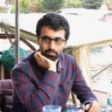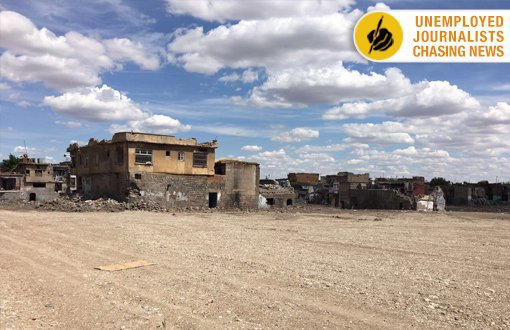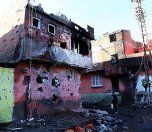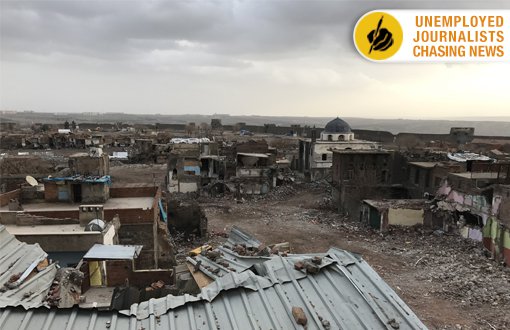Click to read the article in Turkish and Kurdish
One of the longest curfews in the world was put into effect in Diyarbakır’s Sur district due to the clashes that restarted as a result of interruption of the peace process that was carried out in Turkey.
In addition to displacements, human rights violations and casualties, the historical fabric has been severely damaged in Sur, which hosts the cultural heritage of many societies throughout history. The latest photos taken in the neighborhood of Hasırlı, which is otherwise known Gavur (Giaour) or Xançepek as Diyarbakır residents call it, reveal that the whole neighborhood was destroyed.
Later, 6,300 parcels of land in the Sur district were included within the scope of “urgent expropriation” through the resolution adopted by the Council of Ministers.
Curfew continues in six neighborhoods
Reports continue to come from Sur that the curfews and destruction continue. From when the curfew began on December 2, 2015, six neighborhoods were levelled to the ground in Sur. This destruction continues to date since March 10, 2016, following the blockade and operations that lasted 103 days.
According to the previous announcement made on the Sur Sub-Governorship’s official website, the curfew for nine neighborhoods (Abdaldede, Alipaşa, Lalebey, Süleyman Nazif ve Ziya Gökalp, Camii Kebir, Camii Nebi, İskenderpaşa and Melikahmet) was lifted whereas it still continues in six other neighborhoods (Cevatpaşa, Fatihpaşa, Dabanoğlu, Hasırlı, Cemal Yılmaz and Savaş).
The neighborhood of Gavur doesn’t exist anymore
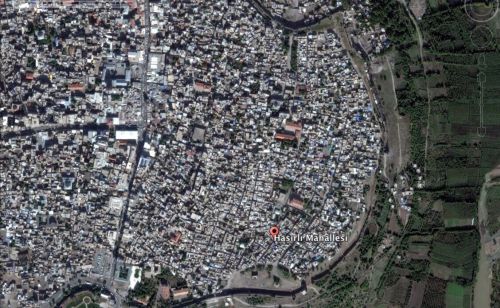
November 8, 2015
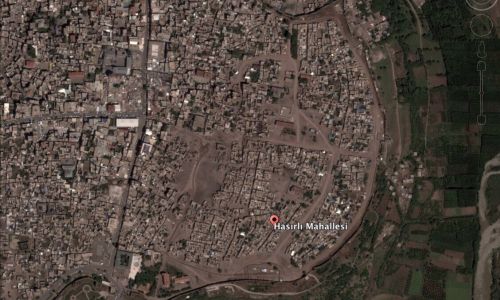
May 10, 2016
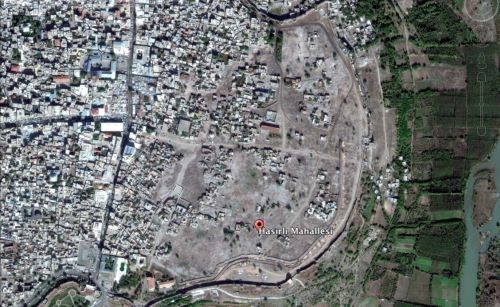
May 8, 2016
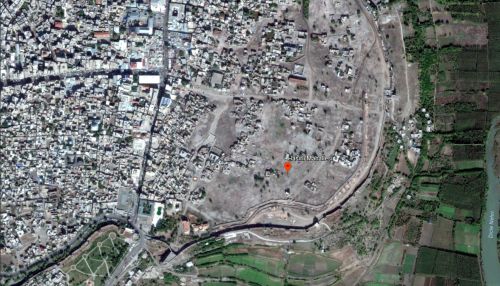
April 21, 2017
The entire Suriçi area was declared an “urban protected area” in 1988. In July 2015, the Diyarbakır Fortress and Hevsel Gardens Cultural Landscape was added to the list of UNESCO World Heritage Sites.
The districts from which residents were forced to leave were razed with artillery shootings by tanks from the Turkish Armed Forces (TSK). Through the demolition of undamaged or lightly damaged buildings following the expropriation motion, the district was levelled to the ground to a great extent. In Suriçi, which is also a protected area, there was harmony between its streets, traditional homes, fountains, traditional trade structure, and its social and architectural structure. The district’s biggest neighborhood, the neighborhood of Gavur, was destroyed.
Concrete barriers block the road
There is no sign of the cultural heritage of this cosmopolitan district that dates back thousands of years and that was the city’s first populated area. Only the Arap Şeyh Mosque still stands in the neighborhood. The Armenian Catholic Church and the Surp Giragos Church, the biggest church in the Middle East, were damaged as well as some Hebrew synagogues. The road to return to the neighborhood has been blocked as well. The concrete barriers placed on street entrances and police security check points block the entrances to the banned neighborhood. Journalists are also still not allowed to enter the neighborhood..For the people who were forced to leave their neighborhoods, there is nothing for them to see upon their
80% of Sur has been “expropriated”
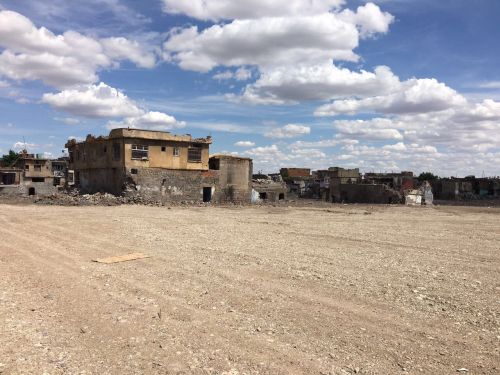
6,300 parcels of land in Sur were included within the scope of “urgent expropriation” through the motion adopted by the Council of Ministers and published in the Official Gazette on March 25. The historical district comprises 7,742 parcels. So through the decision, 80% of the district was expropriated. In one stroke, the land owners ended up homeless. Urban equipment areas as well were removed in the current plan with the change in the Ministry of Environment and Urbanization’s plan through which Conservation Development Plan was not implemented. People’s most fundamental rights guaranteed by the Constitution, including the right to live, the right to health, the right to education and the right to travel, have been openly violated through the curfews.
The last curfew was declared on December 2, 2015 in Sur, which witnessed six curfews in total. Even though the official authorities declared that the operations ended on March 9, 2016, the curfew still continues.
Huge change in demographics
Diyarbakır consists of 17 districts and it is one of the most important cities in Upper Mesopotamia. The oldest settlement of Diyarbakır, which brings together history, culture and nature, is the district of Sur, which is located in the middle of the city.
The walls (Sur) that surround the historical Diyarbakır Fortress, which date back 7,000 years, are important on a global scale. They are the longest and widest walls after the Great Wall of China.The carvings, inscriptions and motifs on the inner and outer ramparts protecting the fortress carry the signs of as many as 30 cultures. The district of Sur, which hosts an ancient fabric, with structures from different civilizations and houses of worship of different beliefs, and holds 7% of Diyarbakır population, was the 5th biggest district of the city.
The district’s 15 neighborhoods (Abdaldede, Alipaşa, Cami-i Kebir, Cami-i Nebi, Cemal Yılmaz, Cevat Paşa, Dabanoğlu, Fatihpaşa, Hasırlı, İskenderpaşa, Lalebey, Melikahmet, Savaş, Süleyman Nazif and Ziya Gökalp) are located inside the ramparts, which look like a fish from an aerial viewpoint.
45% of Sur’s population was living in Suriçi, which comprises 132 hectares of land.
People we spoke with passionately explained what is happening. They explained not only the recent period but also the events experienced in 1915 with a very fresh memory. There are many stories in every district of Diyarbakır about Armenians being picked up to be deported and killed in places Kurds call “dungeons.” Assyrians who lived in Mesopotamia and Anatolia in the same years were also forced to emigrate or they were killed. The total death toll is estimated to be 300,000. The Armenian population that was 73,000 in 1914 became 3,000 in 1918, and the Assyrian population dropped from 100,000 to 27,000. Even though it varies between different sources, the generally accepted conviction in Ottoman, Armenian and Kurdish historical research is that 30% of the population consisted of non-Muslims like Armenians, Assyrians and Chaldeans in Diyarbakır before 1915.
Türkay: For the Armenians, it is very melancholic
Diyarbakır Surp Giragos Armenian Church Foundation Board member Gafur Türkay, whom we met as part of the report in Diyarbakır, expressed with a broken heart that the whole neighborhood had been annihilated.
Stating that Diyarbakır has been an Armenian city all along and it is Suriçi where the Armenians predominantly live, Türkay says that the history of of the neighborhoods of Sur and Gavur go very deep.
According to Türkay, 60% of the population living inside and near Sur was Christian and 40% was Muslim until 1915: “We know that they were predominantly Armenians.”
Saying that all the areas known as the neighborhood of Gavur are associated with Armenians, Armenian architecture, and old stone houses, Türkay goes on:
“Since ancient times, Armenian artists used to live in their place with their architecture and their style, as well as their cuisine and music. Everyone was working at their jobs until the evening, and then they set their tables and brought their instruments to revel. For instance, Sami Hazinses, Bedriye Aysel and Coşkun Sabah were born in that neighborhood. So, we are talking about a place which is known by these Armenian figures.”.
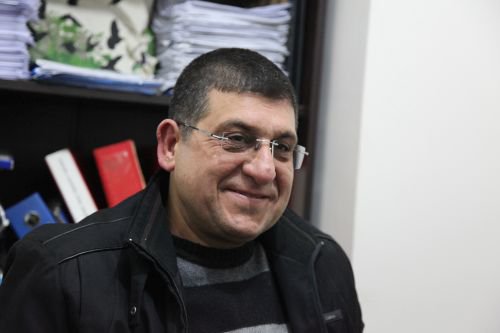
Finally, touching on the events in Sur, Türkay said:
“I might be exaggerating a bit, but they are trying to get rid of everything related to the Armenians. Unfortunately, those traces were destroyed along with all the symbols that showed us that past lifestyle.
“In the early days, maybe some of you saw us walking down from the Four-Legged Minaret; there were very narrow streets. Now even a plane can land on those streets in which a car could barely fit. So, the whole historic fabric was destroyed there. Now, actually we are in a very bewildering situation. I, as a citizen who lives in Diyarbakır, feel stunned. For the Armenians, this is a very sad thing. Mıgırdiç Margosyan street doesn’t exist anymore. Unfortunately, there is no neighborhood left called Gavur neighborhood.”
Makbule Ana*: I cannot live outside of Sur
We also listened to Makbule Ana, who didn’t leave Sur and who previously lived in the neighborhood of Hasırlı. She now lives in a neighborhood of Sur that still remains. She explained in tears how her old neighborhood was razed. Telling with tearful eyes that she has nothing left but her home, Ana says that she cannot live in anywhere but Sur.
“I tricked my children by telling them they are shooting a film”
As we walk on the streets that survived the destruction in Sur, we hear a voice from a window saying “They burned down our house too,” and we direct our camera to where the voice came from. As a father tells what happened, his three little daughters are listening to what their father says. The father says that he used to reside in the destroyed Hasırlı neighborhood. They went without food and water with his mother, father, spouse and children in the basement for four months, and lived in fear of death every day until the day they left the basement. He told their children that they are shooting a film so that the children won’t get scared. The children saw the truth when they went out.
An old man approaches us on another street and starts complaining. He says that he only got a very small amount of money for his demolished three-storey home and that he couldn’t save anything from the house. After saying that his neighborhood was razed just like his home, he slowly wanders out of sight on the street.
Hasty ExpropriationThe Council of Ministers’ decision of “urgent expropriation” for 16 neighborhoods in Sur and 2 neighborhoods in Yenişehir was published in the Official Gazette on March 25, 2016. The Diyarbakır Bar’s application to Council of State 6th Chamber objecting against the “Urgent Expropriation” decision to have it annulled and granted a motion for stay of execution was rejected. In response, the Diyarbakır Bar appealed for correction. The bar filed a lawsuit against the Council of State for a motion for stay of execution on the grounds that the decision contravenes law and doesn’t serve the public interest. The neighborhoods which have been included in the expropriation are Abdaldede, Alipaşa, Cemal Yılmaz, Camii Kebir, Cevatpaşa, Dabanoğlu, Hasırlı (Gavur), İnönü, İskenderpaşa, Lalebey, Malikahmet, Özdemir, Süleyman Gazi, Savaş, Şemhane, Ziya Gökalp, Köşkler and Yenişehir. |
(OA-ZK/NU/HK)
* Ana means mother and it is a way of addressing elder women.
Tomorrow: Trans Rights
***
UNEMPLOYED JOURNALISTS CHASING NEWS
1- Even Though They Speak Through Their New “Occupations,” They Are Journalists
2- Journalism is Banned under theState of Emergency
3- Germany: New Generation Diaspora/Kopuntu
4- Germany: Immigration of the Suffocated
5- The Organization that Made "The Arab Girl Looks from the Window"
6- How They Work/Cannot Work, Breaking Down the Stereotypes
7- They Marry White People to Avoid Discrimination
8- Private Rehabilitation Centers and Problems: The Example of Bingöl
9- Two Directors Discuss the “Educational Support for People with Disabilities” Practices
10- Students and Parents from Bingöl Tell of Their Experiences
11- 'Solution is Inclusion System in Education for People with Disabilities'
* The "Unemployed Journalists Chasing News" project is being realized with the financial support of Matra-Human Rights Program of Consulate General of the Kingdom of the Netherlands.




